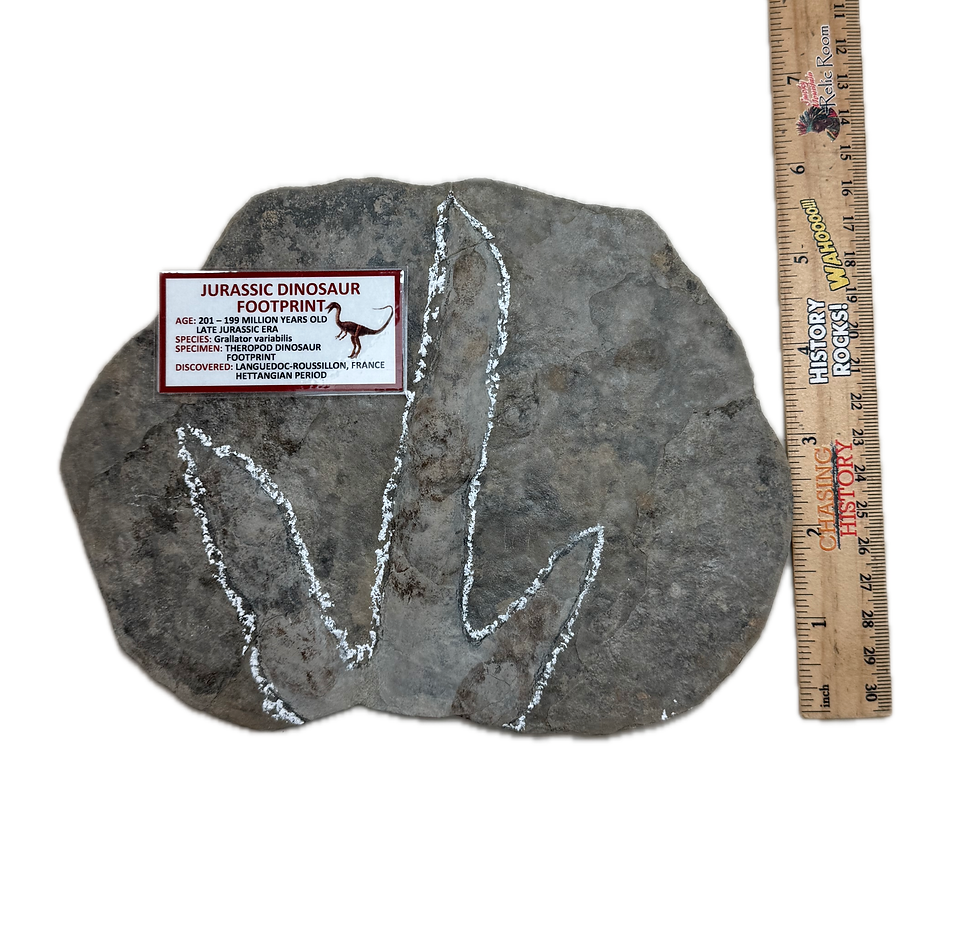Mars Rock
An Authentic Piece of a Martian Meteorite
Mars has lived in our imagination as the home for humanity. With the success of Space X and globally backed missions, our imagination may become history as humanity takes its next step by becoming an inter-planetary species.
When meteors impact the Red Planet, pieces of its surface are ejected into space that occasionally fall to earth as meteorites. Those meteorites are identified by chemical signatures matching those we have taken on the Martian surface.
This is a piece of one of those meteorites.
* Mars *
Mars is the fourth planet from the Sun and the second-smallest planet in the Solar System, being larger than only Mercury. In English, Mars carries the name of the Roman god of war and is often referred to as the "Red Planet". The latter refers to the effect of the iron oxide prevalent on Mars's surface, which gives it a reddish appearance distinctive among the astronomical bodies visible to the naked eye. Mars is a terrestrial planet with a thin atmosphere, with surface features reminiscent of the impact craters of the Moon and the valleys, deserts and polar ice caps of Earth.
* Physical Characteristics *
Mars is approximately half the diameter of Earth, with a surface area only slightly less than the total area of Earth's dry land. Mars is less dense than Earth, having about 15% of Earth's volume and 11% of Earth's mass, resulting in about 38% of Earth's surface gravity. The red-orange appearance of the Martian surface is caused by iron(III) oxide, or rust. It can look like butterscotch; other common surface colours include golden, brown, tan, and greenish, depending on the minerals present.
* Habitability *
The current understanding of planetary habitability – the ability of a world to develop environmental conditions favorable to the emergence of life – favors planets that have liquid water on their surface. Most often this requires the orbit of a planet to lie within the habitable zone, which for the Sun extends from just beyond Venus to about the semi-major axis of Mars. During perihelion, Mars dips inside this region, but Mars's thin (low-pressure) atmosphere prevents liquid water from existing over large regions for extended periods. The past flow of liquid water demonstrates the planet's potential for habitability. Recent evidence has suggested that any water on the Martian surface may have been too salty and acidic to support regular terrestrial life.
Detection of impact glass deposits (green spots) at Alga crater, a possible site for preserved ancient life.
The lack of a magnetosphere and the extremely thin atmosphere of Mars are a challenge: the planet has little heat transfer across its surface, poor insulation against bombardment of the solar wind and insufficient atmospheric pressure to retain water in a liquid form (water instead sublimes to a gaseous state). Mars is nearly, or perhaps totally, geologically dead; the end of volcanic activity has apparently stopped the recycling of chemicals and minerals between the surface and interior of the planet.
* What is a Meteorite? *
A meteorite is a solid piece of debris from an object, such as a comet, asteroid, or meteoroid, that originates in outer space and survives its passage through the atmosphere to reach the surface of a planet or moon. When the original object enters the atmosphere, various factors such as friction, pressure, and chemical interactions with the atmospheric gases cause it to heat up and radiate energy. It then becomes a meteor and forms a fireball, also known as a shooting star or falling star; astronomers call the brightest examples "bolides". Once it settles on the larger body's surface, the meteor becomes a meteorite. Meteorites vary greatly in size. For geologists, a bolide is a meteorite large enough to create an impact crater.
top of page
SKU: CHAS12
$35.00Price
Related Products
bottom of page




















